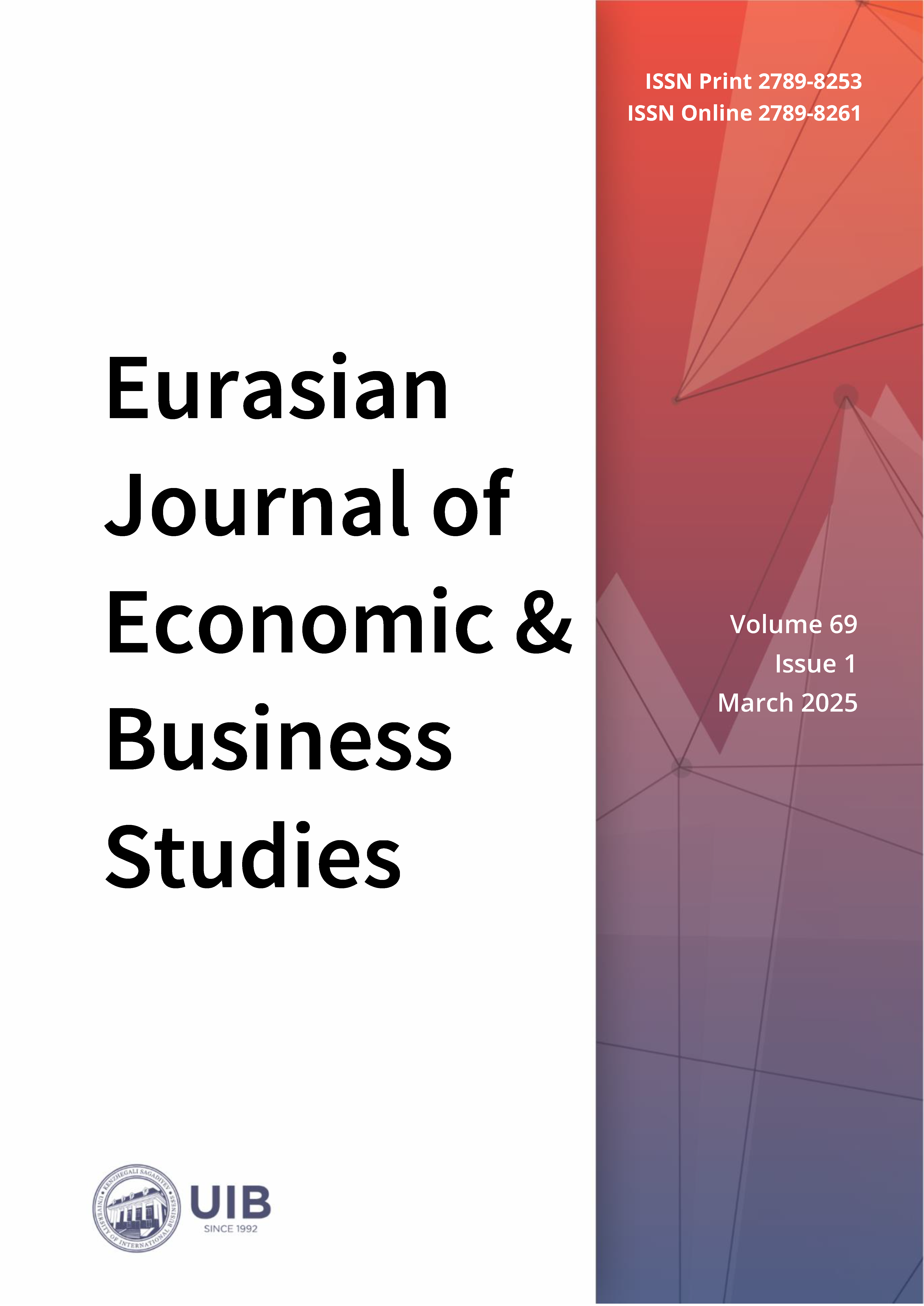Evaluating the Impact of ESG on Regional Development in Kazakhstan: Empirical Analysis
DOI:
https://doi.org/10.47703/ejebs.v69i1.459Keywords:
Economy, Economic Development, Economic Stability, Environmental Sustainability, Social Equity, Governance, Sustainable Growth, KazakhstanAbstract
Environmental, social, and governance (ESG) principles have become increasingly vital for fostering sustainable regional development in emerging economies in recent years. This study assesses the relationship between ESG factors and regional economic performance using a panel dataset covering 18 regions from 2005 to 2023. The research used panel data econometric methods, including fixed effects (FE) and random effects (RE) models, to control for regional heterogeneity and estimate the impact of key ESG indicators. The Hausman test is used to determine the appropriate model specification, while regression analysis quantifies the relationships between solid and air pollutant emissions, R&D expenditure, labor force size, and regional GDP. The empirical results indicate that solid pollutant emissions have a significant adverse effect on regional GDP (FE coefficient = –17.94, RE coefficient = –18.57), while R&D expenditure (FE = 0.33, RE = 0.30) and labour force size (FE = 8.55, RE = 7.37) contribute positively and significantly to GDP growth. Regions with high R&D investment demonstrate up to 15% higher GDP growth, whereas variations in pollutant emissions account for a 20% gap in economic output. These findings suggest that regional ESG strategies require targeted policy interventions to mitigate environmental damage while fostering innovation-driven economic growth. Future research should investigate long-term causal mechanisms, sector-specific ESG influences, and qualitative governance factors to enhance regional sustainability frameworks.
Downloads
How to Cite
Downloads
Published
Issue
Section
License

This work is licensed under a Creative Commons Attribution 4.0 International License.
Authors retain copyright and grant the journal right of first publication with the work simultaneously licensed under a Creative Commons Attribution (CC-BY) 4.0 License that allows others to share the work with an acknowledgment of the work’s authorship and initial publication in this journal.



